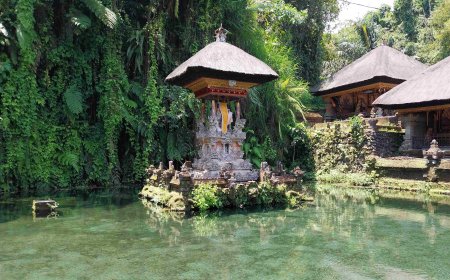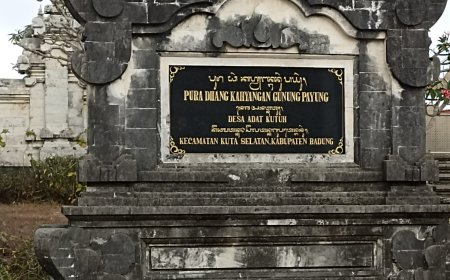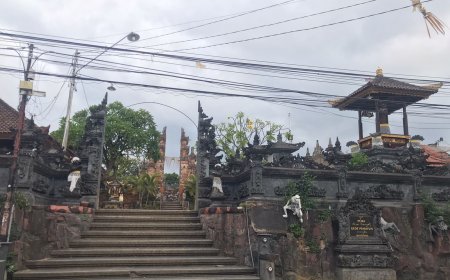The Mystery of Goa Lawah Temple, a Sacred Place Guarded by Thousands of Bats
Goa Lawah Temple, which literally means "Bat Cave," is one of the most prominent cultural and spiritual wonders on the Indonesian island of Bali. This article will take you on an in-depth journey through the history, rich culture, and mystical elements that weave the existence of this temple.
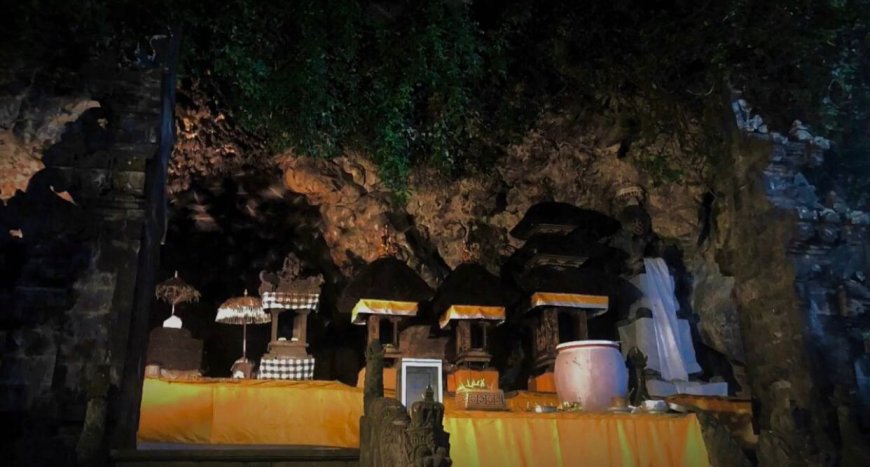
Goa Lawah Temple (Photo Source: Editorial Collection)
Goa Lawah Temple, otherwise known as Goa Lawah Temple, is one of the most historic and famous holy places in Bali. Goa Lawah Temple is a temple located in Pesinggahan Village, Dawan District, Klungkung Regency, which is about 50 kilometers from Denpasar. This place is not only a place of worship for Hindus, but is a tourist destination that is visited by many tourists because this temple has a rich history and interesting legends.
Goa Lawah Temple has two meanings, namely Goa which means "Cave" and Lawah which means "Bat". Therefore, it can be interpreted that Goa Lawah Temple is a temple inhabited by thousands of bats. Goa Lawah Temple, also known as the Kahyangan Jagat temple, is around 10 centuries old and was founded by a respected holy priest named Mpu Kunturan in 929 Saka or 1007 AD. In several texts, some people often conclude in general terms that the large temples with the status of Kahyangan Jagat and Sad Kahyangan in Bali were built by the famous priest, namely, Mpu Kuturan. This fact is proven by the mention of the existence of Goa Lawah Temple in Mpu Kuturan's edict.
It is said that Mpu Kuturan came to Bali in the 10th century during the reign led by the younger brother of King Airlangga. Airlangga himself ruled East Java (1019-1042). Upon arrival, Mpu Kuturan met many sects in Bali. Seeing these observations, Mpu Kuturan then developed the Tri Murti concept with the aim of uniting all these sects. The arrival of Mpu Kuturan brought major changes to the area, including teaching the Balinese people how to worship Sang Hyang Widhi Wasa, known as kahyangan or parahyangan.
After discussing the history of Goa Lawah Temple, aren't you curious about the mystical stories related to this temple? Come on, listen carefully and read the continuation of this article, which will explain the mystical story of the existence of Goa Lawah Temple.
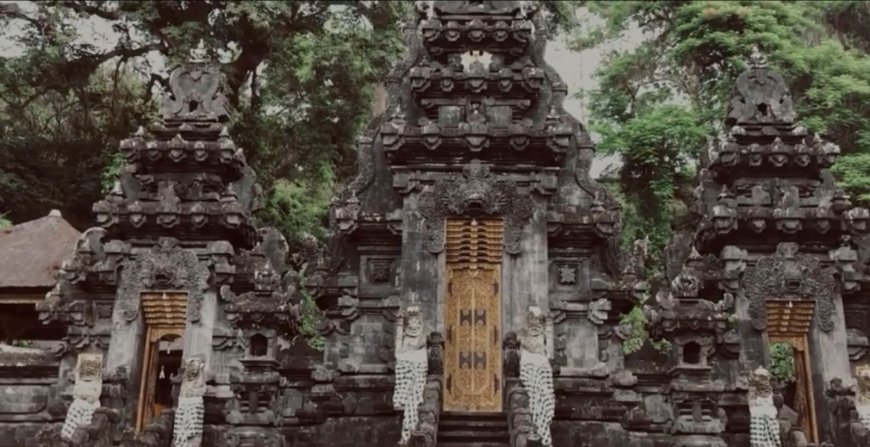
Gelung Temple (Photo Source: Youtube.com/Pujangga Nagari Nusantara)
It is this Gelung Temple that separates the central courtyard (jaba tengah) from the inner courtyard (jeroan) of the temple, which is a symbol that this bat has a special position in this temple.
Goa Lawah Temple has a very close relationship with Besakih Temple which is located on the slopes of Mount Agung which is the main Hindu temple in Bali. According to Lontar Prakempa Mount Agung, Goa Lawah Temple represents the head of The Basuki Dragon, while Goa Raja Temple in the Besakih Temple complex represents its tail.
Meanwhile, in Hindu mythology, The Basuki Dragon is one of the three dragons incarnated by God who was sent to save the earth. The Basuki Dragon is a symbol of the cycle of balance that occurs in nature. Water evaporates from the sea, falls to the ground, forms rain on the mountains (land) and then returns to the sea. The concept of natural balance attached to the existence of Goa Lawah makes it the center of worship for Bhatara Tengahing Segara which represents God in the form of guardian of the oceans.
Another mystical story about the existence of Goa Lawah Temple is of course, a cave inhabited by very sacred bats. In fact, if anyone dares to disturb or kill the bats in this cave, disaster will occur. Right at the mouth of this cave, various shrines have been built to worship the god of the sea as a manifestation of God or Ida Sang Hyang Widi Wasa. When you arrive at the mouth of this cave, you will hear the sound of thousands of bats chirping together as if they were singing in this cave. Hindus who pray here are prohibited from saying harsh words or belittling Goa Lawah Temple.
Behind the mystical story above, Goa Lawah Temple also has a very stunning beauty so that many tourists want to visit this temple. For those of you who want to visit, you can pay for a private tour package or entrance ticket that has been determined. With operational tourist visits every day from 08.00 to 18.00. However, you also need to pay attention, the opening hours of tourist destinations can change according to religious activities. Come on, what are you waiting for? If you go to Bali, don't miss visiting one of the famous destinations, namely Goa Lawah Temple.


















































